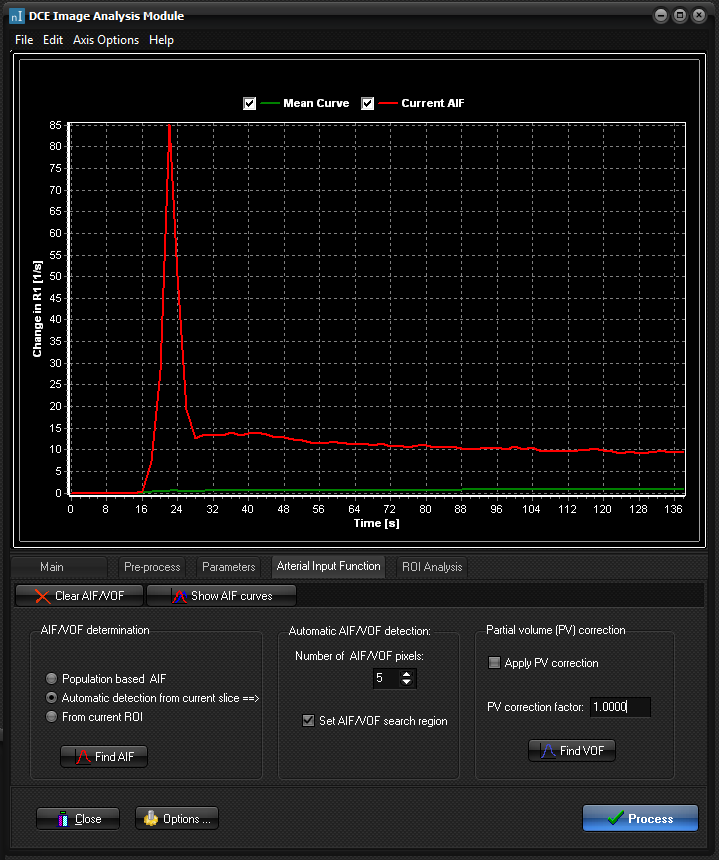|
|
|
|
Applying
arterial input function (AIF) deconvolution
To
generate semi-quantitative perfusion kinetic maps, the arterial input
function (AIF) must be defined. Note that, although the AIF is defined and
corrected for, the resulting maps can still not be considered to represent
true perfusion (in MRI). This is primarily because the relationship between
the measured signal change and the underlying contrast agent concentration is
not known. Still, if proper definition - and correction for AIF is performed,
kinetic indices may be obtained which should be independent of the AIF in a
given patient or given examination allowing for comparison of kinetic values
obtained in different patients or at different time-points in the same
patient (see Theory section for more information).
nordicICE performs deconvolution of the tissue response curves (dynamic
curves for all pixels) with the AIF using the method proposed by Murase by
default for extended Tofts modelling (Magnetic Resonance in Medicine
51:858–862; 2004). However a full non-linear iterative least square curve fit
can also be applied, as described in Options.
Three
different types of AIF can be used:
Note
that DCE analysis cannot be run without defining an AIF. Thus, if no AIF is
specified, the population-based AIF will be used. Partial
volume (PV) correction. This option can be used together with AIF from
automatic detection or from current ROI. Related topics:
|
|

